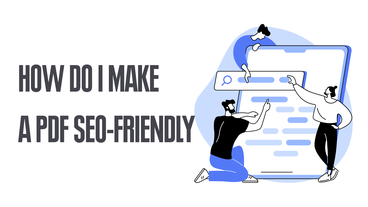What is technical SEO? In short, this is a type of SEO strategy that includes all the techniques used for improving loading speed, site functionality, and searchability of on-page content. The idea is to tweak your web pages to make them more search-engine friendly.
Since all of this happens directly on your site, it is considered an on-page SEO technique. What differentiates general SEO from technical optimization is that the latter doesn’t deal with the basic stuff; it happens after you’ve gone through that stage.

Technical SEO simply aims at upgrading certain elements of web pages and making them more accessible. Today, we will explore the issue in detail.
Do You Really Need Technical SEO?
Okay, we know a bit about what technical SEO is. The question now is, it worth it? Well, why else would be discussing it at all? Search engines have to filter out the search results in order to give users the most relevant and most reader-friendly content.
Perhaps your site has just the type of content a user needs but let’s say that the loading times are frustrating or that your website is not well-structured. Google will see this and downrank the site as it wants the content to meet the user’s needs.
This is where technical optimization becomes relevant.
Technical SEO does not simply aim to appease the web crawlers; it also makes users’ lives better. The idea is to make your web project work as fast and smooth as possible for the visitors.
The other aspect of technical SEO deals with web crawlers, making it more convenient for them to judge your content. Search engine robots assess websites based upon several factors before ranking it, and the most crucial one being user experience (UX).
Similarly, loading times are very relevant. Ideally, web pages are supposed to load super fast and not bother visitors with unnecessarily long loading times. Webpage loading speed is the most important ranking factor online.

Do not forget to also focus on the content and how it reflects the categorization of your page accurately, data structuring is also equally important. In short, the easier you make the technical aspects for visitors, the better you’ll rank in Google results. The importance of technical SEO cannot be underestimated.
The goal of focusing on the technical side is not just to appease the web crawlers but also to make your site better for the regular user, hence, technical SEO can help you get much better user ratings and reviews for your site. Win-win for you, right?
Let’s dive into how it’s done and what you need to know.
What Is Included In Technical SEO? – A Step By Step Guide
A website that works well for both search engines and users is a well-optimized website. Optimization makes visual and text content relatable, avoids confusion, user experience smoother, and, most importantly, it avoids all the hassles with duplicate or near-duplicate texts, dead links, etc.
To get a better idea of how this all happens, we must take a step by step look into what is technical optimization for SEO:
Faster Webpage Loading Times
Gone are the days when only a couple of keywords in your texts could get you ranked higher up online. Now, Google and other search engines have a long list of demands to prioritize your content in the search results, and speed is one such factor.
Speed as a ranking factor has become relevant now as internet access has become more widespread and broadband/mobile connections afford users a pretty decent speed on average. This means that the users expect their websites to load faster and for the content to be available immediately.
However, poorly optimized websites can take some time to load; any longer than two seconds is unacceptable – Google will penalize you for this.

To judge whether your webpage is fast enough, you can take tests and then go through some optimization steps to make things faster. Core Web Vitals is a perfect option in this regard, and if you find that your page is slower, here are a couple of things you can do:
- Don’t upload heavy media images on your page.
- Keep the image size optimized for better loading times.
- You should also avoid putting too many images and videos on a single page, the more the content, the longer the loading times.
- Instead of putting big chunks of content on one page, structure your site well and put bits of data on pages that need them.
- Have your website structure evaluated by an expert to see if any defects are causing slowdowns.
In short, keep it simple and minimalistic – don’t bombard the page with content, instead, divide it between pages effectively so that the loading times are not affected.
Improved Crawlability
Let’s move on to explore what are the technical factors in SEO regarding web crawlers.
Loading speed is just the tip of the iceberg, to understand technical SEO better, you’ll need to understand and explore how the search engine views your content. If you were thinking that the search engine looks at your content the same way a human eye, you are gravely mistaken.
Search engines use robots as crawlers – not as might have imagined, virtually instead. These robots explore the content, follow different links and explore the structure of your site before deciding the relevance of your website.
They won’t see things like us, instead, they’ll “crawl” over elements that you’ve given them access to (you can block off certain sections) and read the content based on your instructions, in the robot.txt file. This file lets you decide which pages become part of the search results and which don’t and how the robot crawls through your site, which links it can follow, and so on.

If you make even a teeny-tiny mistake with this file, the consequences might be far-reaching – your search ranking may suffer severely.
One such mistake might be cordoning off the CSS and JS sections of your site for the robot, these elements show the search engine how your site appears and functions, without reading it, the search engine will have no clue about how to display your site – in short, utter disaster.
Do check if this is not the case with your robot.txt file, perhaps this is what might be causing issues with the ranking. You shouldn’t fumble around with the robot.txt file unless you know what you’re doing, it is best to let a developer handle it.
Also, be sure that your robots-meta-tag is correct.
It is a code that directs the robot as to what sort of information they’ll find in there and what they need to do with that information. You can use meta tags to keep your crawlable webpage off the search results (for whatever reason).
You can use Yoast SEO to no-follow and no-index your posts and pages quite easily.
Wipe Out All The Dead Links
The title is pretty self-explanatory, but here is the deal: all websites have some number of dead links in them. Ideally, your website should have none, but if your site keeps on sending visitors to dead ends with 404 error pages, your search ranking will suffer.
You can use tools like Yoast SEO to find out dead links and to redirect those to fresh pages. Removing dead links can be a tedious process, after all, as your website progresses, you'll make and break things, it is only natural – so be sure to keep regular tabs on your links.
If you delete a page or move it, redirect its URL to avoid sending your visitors to a dead end.
Avoid Duplication Of Content
Adding to our discussion on what is included in technical SEO, content duplication is one of the biggest ranking mistakes you can make. We’re not just talking about content plagiarization, which is a very serious issue and must be avoided at all costs, no, we're talking about duplicate content about which you know nothing.
That can happen when two or more URLs display the same content. While the users are not affected that much, it does confuse Google. If you want to avoid this, use a special SEO tool for setting up canonical URLs for all the web pages on your site - these are the pages you want the search engine to index.
That’s not all. It is very important that you do not copy content! Maintain at least 85% of uniqueness (names and some other elements can’t be changed) in all of your writings.
Securing The Web Pages
This one is simple, you should get an SSL certificate for your site to correctly implement HTTPS to your website. You'll significantly improve the security features of the site, and since HTTPS is a crucial ranking factor, you'll also rank higher.
Focus On Data Structuring
The art of creating a great web page involves structuring it for the ease of reading. It’s all about telling your readers everything, but not all at once. The simplest, most efficient way of doing this is to divide the content into sections by regularly posting smaller blocks of content. Another good idea is to dedicate various pages for various segments of your content.
The idea is to give your readers bits of information, the segments they'd be expecting at every turn, and also improve your positions in SERPs.
Create An XML Sitemap
The XML sitemap helps the search engine to index your site; it simply consists of a list of all the web pages on the site. Google goes through it to scan your site, and this way, it won’t miss anything crucial.

XML sitemaps are not necessarily needed if your internal links are strong enough and allow the crawl bots to scan through the entire site, but there's no downside to having one. You should create one for your site, at least, we recommend that you do.
Use Hreflang Tags
This only applies to projects meant for different countries. For example, if your content has in mind audiences from both the US and the UK, you'd want both audiences to look at slightly different versions because of the linguistic differences.
Thus, hreflang tag attributes can come into use when you want to adapt pages for targeted localities and languages. You’ll need some skills in multilingual SEO to pull it off perfectly, or better yet, get experts on board to help you with it.
However, this does not apply to local business websites, only international ones.
Bottom Line
We’ve barely touched on what is included in technical SEO, but only this much was possible in this limited text space. The idea was to acquaint you with the stuff and give you a checklist of areas to scan for any issues demanding technical improvements.
We recommend that you focus on making your site perfectly smooth, fast, meaningful, relevant, and crawlable if your goal is to improve your search engine rankings. This not only concerns Google, but also the rest of search engines.
As with any technical stuff, SEO is not as simple as it appears – as we said, we’ve just scratched the surface in this article. If you, at any point, find yourself lost, it is best to take a step back and let the professionals handle matters for you lest you make things worse.
In the end, technical SEO will reward you many folds more than what you put in it!










Comments